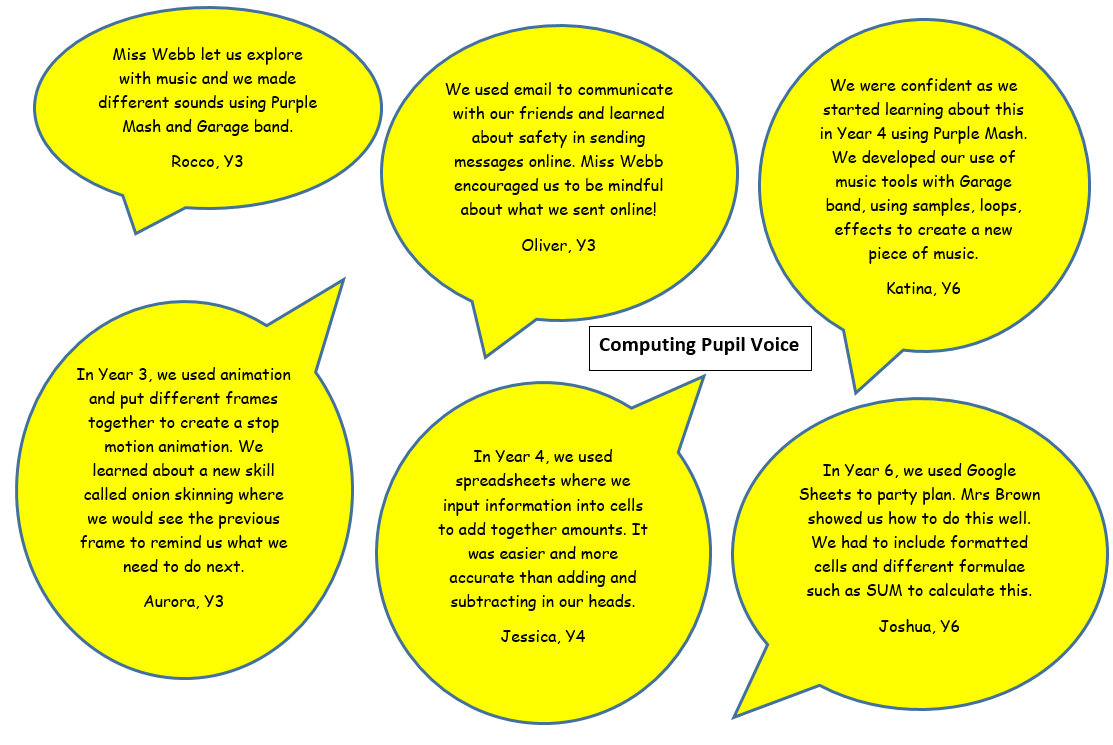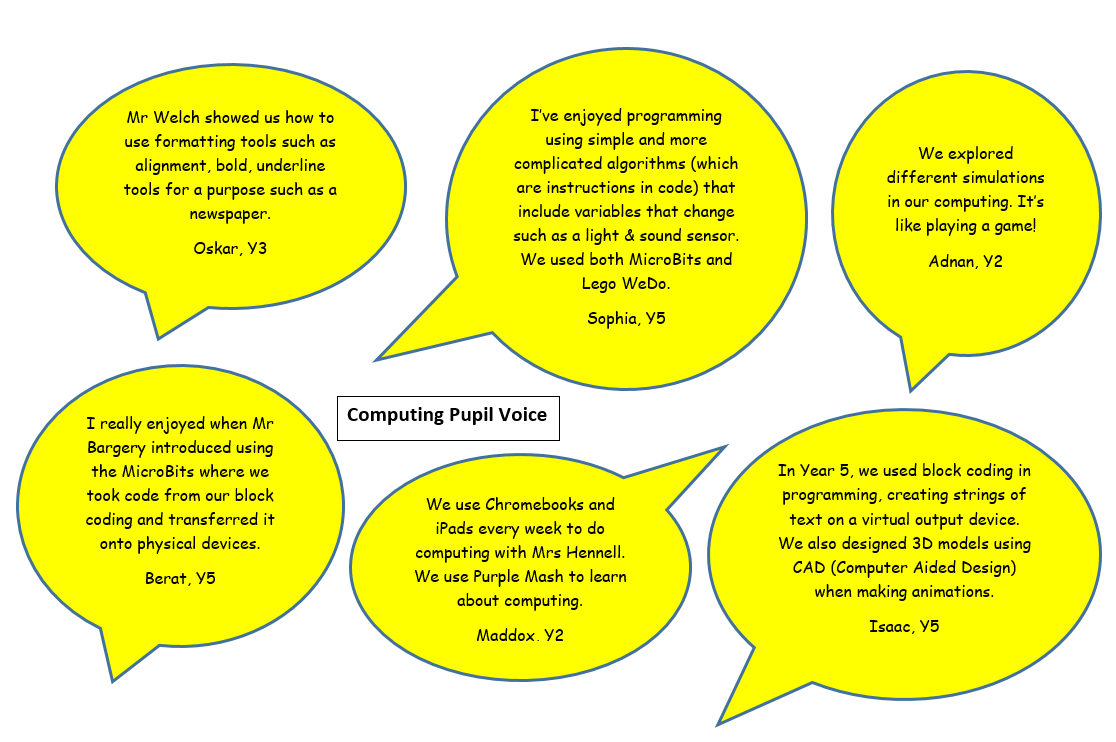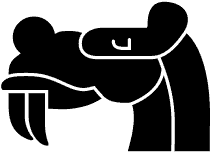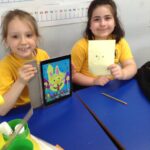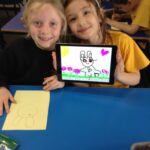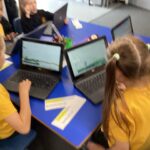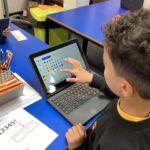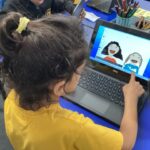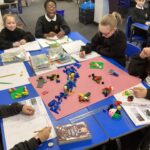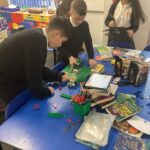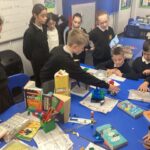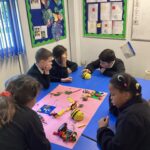Intent
At Longlands Primary School, the intent of our computing curriculum is to equip our pupils with the essential knowledge and skills to thrive in an increasingly digital world. We aim to provide a broad and balanced Computing education that fosters creativity, resilience, and critical thinking. Our curriculum is designed to ensure that pupils develop a deep understanding of computer science, information technology, and digital literacy.
Implementation
Our Computing curriculum at Longlands Primary School is implemented through a combination of engaging theoretical knowledge and hands-on practical experiences. We offer a curriculum that builds upon previous learning, ensuring that pupils develop a secure foundation in computational thinking and coding. Through a variety of interactive lessons, workshops, and projects, pupils are given the opportunity to explore topics such as algorithms, data handling, and internet safety.
The staff at Longlands are highly skilled and passionate about integrating technology into teaching and learning. They use a range of resources, including interactive whiteboards, Chromebooks, tablets, Microbit and Lego WeDo coding kits, to create a dynamic learning environment. Pupils are encouraged to work collaboratively, problem-solve, and think critically when solving computational challenges. Moreover, cross-curricular links are made to embed Computing skills into other subjects, enhancing the relevance and application of learning.
- Ipads
- Ipads
- Chromebooks
- Chromebooks
- Chromebooks
- Micro-bits
- Lego we-do
- Lego we-do
- Beebots
What Computing looks like at Longlands
Children in the Early Years Foundation Stage (EYFS) to develop their Computing skills involves a wide range of activities aimed at enhancing their creativity, fine motor skills, digital literacy, and investigative abilities.
- Encouraging children to use recording devices to articulate the processes involved in their creative endeavours. For instance, capturing the various stages of creating a painting using a voice recorder.
- Assisting children in employing computing skills to craft animations from their own drawings.
- Inspiring creativity through the use of painting programs.
- Demonstrating how technology can elevate their creations, such as helping them embed a personalised sound button in a model house.
- Supporting children in engaging with phonics games on iPads and other computing devices.
- Enhancing reading experiences by incorporating recorded sound effects from stories.
- Collaborating with children to produce and play back sound effects for storytelling.
- Facilitating independent use of CD players by assisting children to select and operate CDs effectively.
- Encouraging children to take and print photographs of their creations using models, objects, and items.
- Teaching children how to utilise sound recorders to document their model-making processes.
- Guiding children on using software applications to design and document the creation of their models.
- Utilising iPads and computers for researching information related to structures, for example, when constructing a castle.
- Fostering proficient mouse skills with various devices.
- Developing children’s fine motor skills for precise manipulation of controls on devices like CD players and digital cameras.
- Introducing apps on tablets to support the enhancement of fine motor skills, such as painting and drawing apps.
- Supporting the development of typing and writing skills using computer and tablet keyboards.
- Enabling children to print their digital work effectively.
- Encouraging the effective use of writing and mark-making programmes.
- Promoting investigation skills through discussions on the purpose of investigations, accurate data collection, and operational proficiency with technological devices like a light box or visualiser
In the Key Stage 1 Computing curriculum, pupils will engage in a range of activities to develop their computational thinking and digital literacy skills.
Pupils will create a detailed and imaginative picture that reflects a specific theme from their curriculum. They will use digital tools to enhance their creativity and present their ideas visually. Pupils will practise organising and categorising objects using a branching database. They will learn how to classify items based on specific criteria, helping them develop logical thinking and data management skills. Pupils will be tasked with writing step-by-step instructions to command a physical or on-screen device to accomplish a particular goal. This activity will introduce them to the fundamentals of coding and algorithmic thinking. Pupils will draft and send detailed electronic recommendations regarding a simulation they have explored. This task aims to enhance their communication skills and ability to provide constructive feedback within the school community. Pupils will leverage existing templates or simple software to efficiently organise research findings on a given topic. This exercise will develop their information management and presentation skills, fostering a structured approach to data analysis. Pupils will utilise appropriate software to create a brief yet descriptive narrative of a simple animation. This task will encourage them to articulate their ideas cohesively and creatively, enhancing their digital storytelling abilities.
Within Key Stage 2, the Computing curriculum encourages pupils to develop their understanding and skills across a variety of computing concepts. Throughout this stage, pupils will focus on practical programming tasks, data handling, and multimedia creation to deepen their technological abilities.
Pupils will be tasked with producing an animation to communicate a specific message or idea. To achieve this, they will employ an algorithm to outline the sequence of events in the animation. By using onscreen programming tools or languages, pupils will then bring their animation to life. Pupils will engage in designing and producing a sound project tailored to a specific audience or purpose. They will explore various sounds and audio editing techniques to craft a cohesive sound project that effectively conveys the intended message. Pupils will conduct independent research on a chosen theme or topic, inputting gathered data into a database. This task allows pupils to enhance their data handling skills and understand the importance of organising information efficiently. By utilising spreadsheet software, pupils will generate graphs and charts based on data, enabling them to analyse numerical patterns and trends effectively. This task enhances their ability to interpret and present data visually. Pupils will plan and develop a non-linear multimedia text designed for a particular purpose. This project will challenge pupils to think critically about the structure and navigation of their multimedia text to engage and inform the audience effectively. Pupils will design an algorithm for an onscreen programming task, incorporating repeat functions and procedures to implement a specific pattern or design. Tasks will enhance their computational thinking and problem-solving skills.
